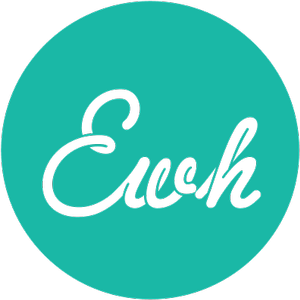
What Makes a Picture Book Manuscript Submission-Ready?
“How do I know if/when my manuscript is ready to submit?”
As a children’s book author, editor, and educator, this is one of the most common questions I hear from aspiring picture book creators. And it’s a great—and important—question. Because the truth is, in the world of picture books, your manuscript often gets one shot per agent or editor. A pass from one typically means a pass from the whole agency or publishing house. So it’s essential to ensure that what you’re sending out is polished, professional, and aligned with what the industry expects.
So what are agents and editors really looking for in a submission-ready picture book manuscript?
Let’s break it down…
1. A Strong, Kid-Centered Concept
Before anything else, agents and editors want to see a clear, compelling concept that feels fresh and marketable—but also deeply grounded in what children care about.
Ask yourself:
- Is my topic or subject age-appropriate for and relatable to young children?
- Does it tap into emotions, situations, or curiosities they’re likely to experience or can relate to?
- Is it unique enough to stand out on a crowded bookshelf?
Remember, a great concept is not just clever—it’s fresh and child-focused.
2. A Clear Narrative Arc (Even in Concept Books)
Every picture book needs a sense of structure… and this includes concept books and non-fiction. Submission-ready manuscripts demonstrate:
- A beginning that hooks the reader and invites them to read on.
- A middle that escalates in some way—conflict, tension, humor, or stakes.
- An ending that satisfies, surprises, or delights.
If you’re working with a concept book or something poetic, the arc might be subtle—but your book still needs a sense of shape and progression.
3. Strong Voice and Language
Agents and editors are always on the lookout for a distinctive “voice”—that elusive blend of tone, word choice, rhythm, and personality that gives your story its flavor.
Ask:
- Does my manuscript play well on the ear when read aloud?
- Is there a strong, distinctive voice, whether from character or the narrative, or both?
- Are the verbs vivid, the nouns specific, and the rhythms intentional?
Picture books are meant to be heard as much as read. Sound matters. (A lot.)
4. Room for the Illustrator
One of the most common beginner mistakes I see is overwriting—describing visuals that the illustrator will bring to life.
A submission-ready manuscript:
- Leaves space for visual storytelling—in other words, doesn’t write what the art will show.
- Avoids art direction (no illustration notes unless absolutely necessary!)
- Trusts the illustrator to co-create the world.
If you’ve described what a character looks like, or explained how a scene works visually, you may be doing too much.
5. Age-Appropriate Word Count and Language
The sweet spot for most picture book manuscripts today is somewhere between 300 and 500 words—though there are always exceptions. If you’re over 800 words, that’s a red flag for most agents and editors.
Submission-ready language is:
- Clear and lean, but not simplistic
- Playful, poetic, pointed, or poignant—depending on the subject and tone
- Carefully chosen—every word earns its right to be there and drives the story forward
6. A Satisfying (and Child-Centered) Ending
A great picture book leaves the child reader with something to feel or think about. Whether it’s laughter, wonder, comfort, or empowerment, the emotional takeaway matters.
Ask yourself:
- Does the ending resonate with the heart of the story?
- Does it feel earned?
- Has my young hero played a central role in their journey of change, rather than relying on a wise elder to solve their problems for them?
Bonus points if your ending invites the reader to want to re-read it, again and again.
7. Proofread, Polished, and Properly Formatted
This might seem obvious, but you’d be surprised how many submissions are rejected for careless typos, incorrect formatting, or not following submission guidelines.
A submission-ready manuscript is:
- Spell-checked, grammar-checked, and read aloud multiple times.
- Properly formatted (12 pt font, double-spaced, contact info on the title page)
- Accompanied by a concise, professional query letter (but that’s another post!)
Final Thoughts
Even polished, submission-ready manuscripts may be passed over—for timing, taste, or the ever-elusive “I just didn’t fall in love with it.” That’s part of the process. But doing the work to truly prepare your manuscript gives it the best possible shot—and shows agents and editors that you’re a professional.
There’s no shortcut to mastering this craft, but there is joy in the journey. Keep writing. Keep learning.
And if you want support for the process, consider hiring a freelance editor for a manuscript evaluation… or check out Julie Hedlund’s and my The Complete Picture Book Submission System. It provides soup-to-nuts information and resources to lead you through every step of the submission process—including an entire unit on how to determine whether your manuscript is submission-ready—so that when you’re really ready to submit, you’ll do so with confidence.
